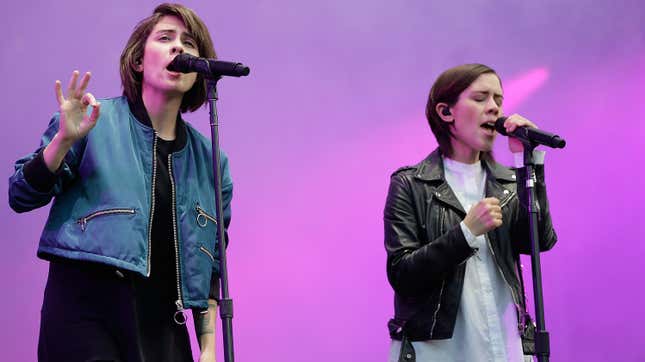

The day Sara Quin of Tegan and Sara wrote her first song, Tegan was sick, and so Sara wore her twin sister’s favorite pair of shoes to high school. Later that afternoon, Sara retired to her bedroom, grabbed her mother’s boyfriend’s guitar (a taboo gesture in the household) and adopted a fake English whine to sing, “Tegan didn’t go to school today/Left me all alone to play,” before changing the chords, “Took her favorite shoes when she went back to bed/Could have kicked her in the head.” When Tegan heard it, she shouted, “We have to record that!” and so their songwriting days began. On paper, it’s an insignificant event, but that first recording would kickstart a lifelong career, one that, so far, has stretched over 20 years and nine full-length albums. They were in 10th grade at the time, newly obsessed with ’90s groups like the Smashing Pumpkins, Nirvana, and whatever local punk bands played free matinees at all-ages venues in their native Calgary. They were wholly unglamorous teenagers, and just as embarrassing as those simple lyrics suggest.
-

-

-

-

-

-

-

-

-

-

-

-

-

-

-

-

-

-

-

-

-

-

-

-

-

-

-

-

-

-

-

-

-

-

-

-

-

-

-

-








































